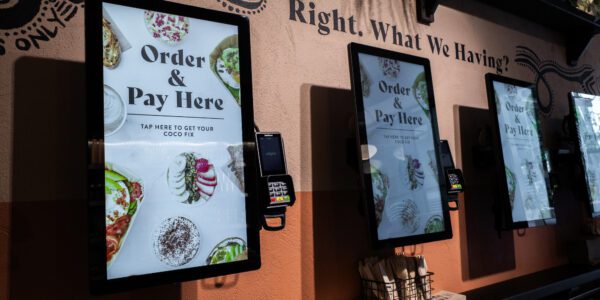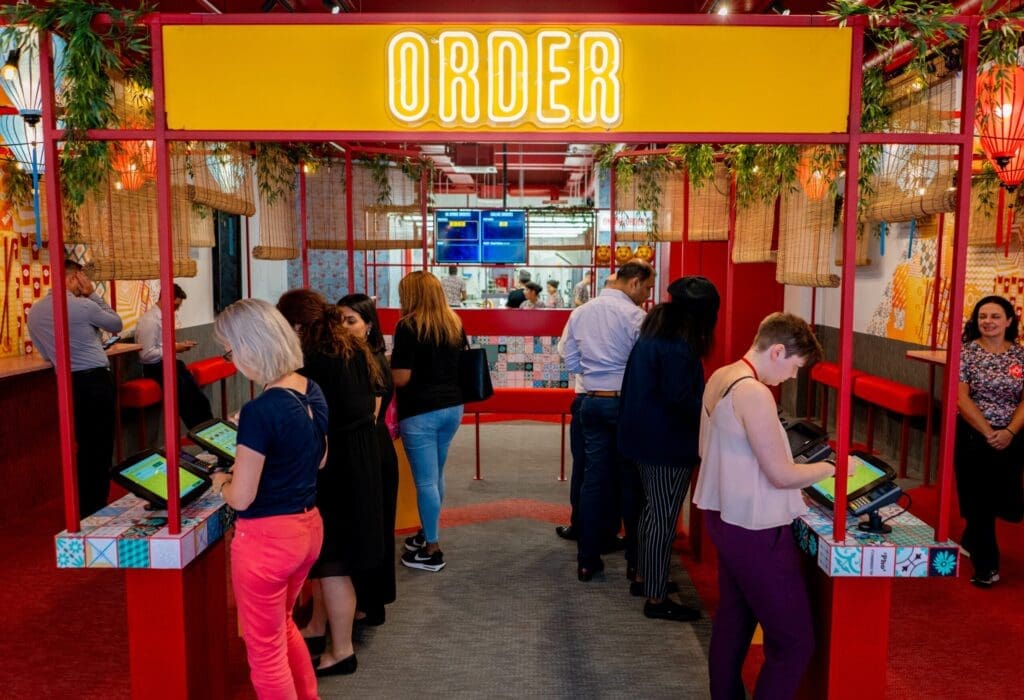7 incredible benefits of using self service kiosks in your restaurant
Self serve kiosks aren’t just for McDonalds any more. Discover the financial and operational benefits of kiosks and why they might be right for your restaurant.

Much like the golden arches themselves, McDonald’s self-service kiosks have become a true hospitality icon.
The McDonald’s kiosks are the first thing that most restaurant operators imagine when they envision kiosks in their own operation.
But the giant brand first started testing kiosks way back in 2003. And it’s investing over £250m in redesigning 200 locations to suit the rise of omnichannel ordering such as kiosks – that’s £250m just for the UK and Ireland.
Can you match that kind of timeframe and budget in your operation? (Don’t worry, neither can anyone else.)
The problem is that without the resources of McDonald’s, Operators often find kiosks difficult to integrate into their wider tech stack. This is thanks to inefficiencies created by fragmented tech.
Our industry research uncovered that 56% of operators feel that not having enough time is a significant barrier to business goals.
The good news? You actually don’t need a cheque signed by Ronald to make kiosks work for your operation.
It just requires a new way of doing things…
Kiosks aren’t likely to be the only order channel open to your customers within your operation.
For example – 50% of orders go through digital channels for McDonald’s. But this isn’t just through McDonald’s kiosks. It also includes Mcdelivery and mobile, as well as third-party delivery.
If you don’t have the resources to develop digital ordering channels in house, it’s likely that each channel is installed and managed by a separate provider. Managing these multiple order channels can quickly become overwhelming. Especially without the resources of McDonald’s to dedicate the full-time management they require..
It’s easy to get into the mindset that the added complexity that comes with the launch of new technology is par for the course when it comes to adding kiosks.

But digital innovation can come to your operation without creating headaches. Finding workarounds for – or accepting – these inefficiencies is actually a drain on your operation’s time.
This can block growth plans significantly.
Think kitchen chaos, where the team is trying to manage a separate device per order channel. Or dedicating a member of staff per shift solely to updating menus across all your channels.
Identifying what isn’t working in your setup – and not just accepting these inefficiencies as a part of tech – is an important step towards a successful kiosk strategy like McDonald’s.
Growth and profit are the ultimate sign of success for each of your order channels. For example, there was a 6% increase in sales for restaurants that were fitted with McDonald’s kiosks after a year.
But your operation won’t be able to action this growth if it’s being blocked by the inefficiencies identified above.
In our research report ‘Hospitality tech 2024: Bridging the efficiency and profitability gap’, we identified:
And yet only 28% of operators reported that improving efficiency is a top focus area for the business.
To unlock revenue, operators need to change the order of these priorities. It’s putting the cart before the horse to focus on growth before fixing inefficiencies.
Trying to manage these inefficiencies rather than fixing them will ultimately slow down your operation to a halt. You’ll lock out any chance of achieving those all important revenue growth targets.
Forward-thinking brands that have tackled the inefficiencies within their tech stack first have gone on to achieve exponential return in revenue with new order channels. We’ve seen kiosks contribute to increases in ATV as high as 35% in those operations that have taken this approach.

The good news is that there are alternatives to separate point solutions which can ease the complicated web of a fragmented tech stack.
An order management system, for example, streamlines the entire order journey in one system. This allows you to take and fulfil 100% of orders from all channels in the same platform, including those from third-party delivery and – of course – kiosks.
“Obviously one of the benefits of kiosks is you can take more orders, but that’s only a good thing if you can actually make the food.
When people are answering the telephones and processing the delivery orders and the JustEat orders it produces a lot of stress. Taking that entire part out of the equation was a massive part of what’s got us to where we’re at today”
Managing all menus in one place, handling all orders through one KMS, and accessing all your sales data in one platform changes the game for your operation’s efficiency.
It empowers you to launch and manage multiple order channels – such as kiosks – with ease. And it frees you to focus on boosting profit from these channels instead of getting bogged down in the day-to-day operations.
Now you can start to carry out kiosk tactics similar to the McDonald’s kiosk strategy that will boost sales, increase profit, and supercharge customer loyalty.
Here are some guides to get started:
Talk to the Vita Mojo team today and see how our technology can elevate your brand, drive sales performance and increase efficiency across your business. Just leave a few details and we’ll get back to you as soon as possible.
Self serve kiosks aren’t just for McDonalds any more. Discover the financial and operational benefits of kiosks and why they might be right for your restaurant.

Learn the benefits of centralising your hospitality data, and how easy-to-read, real-time reports will help you scale your business.

Innovating Hospitality: Lessons from the Retail Sector
